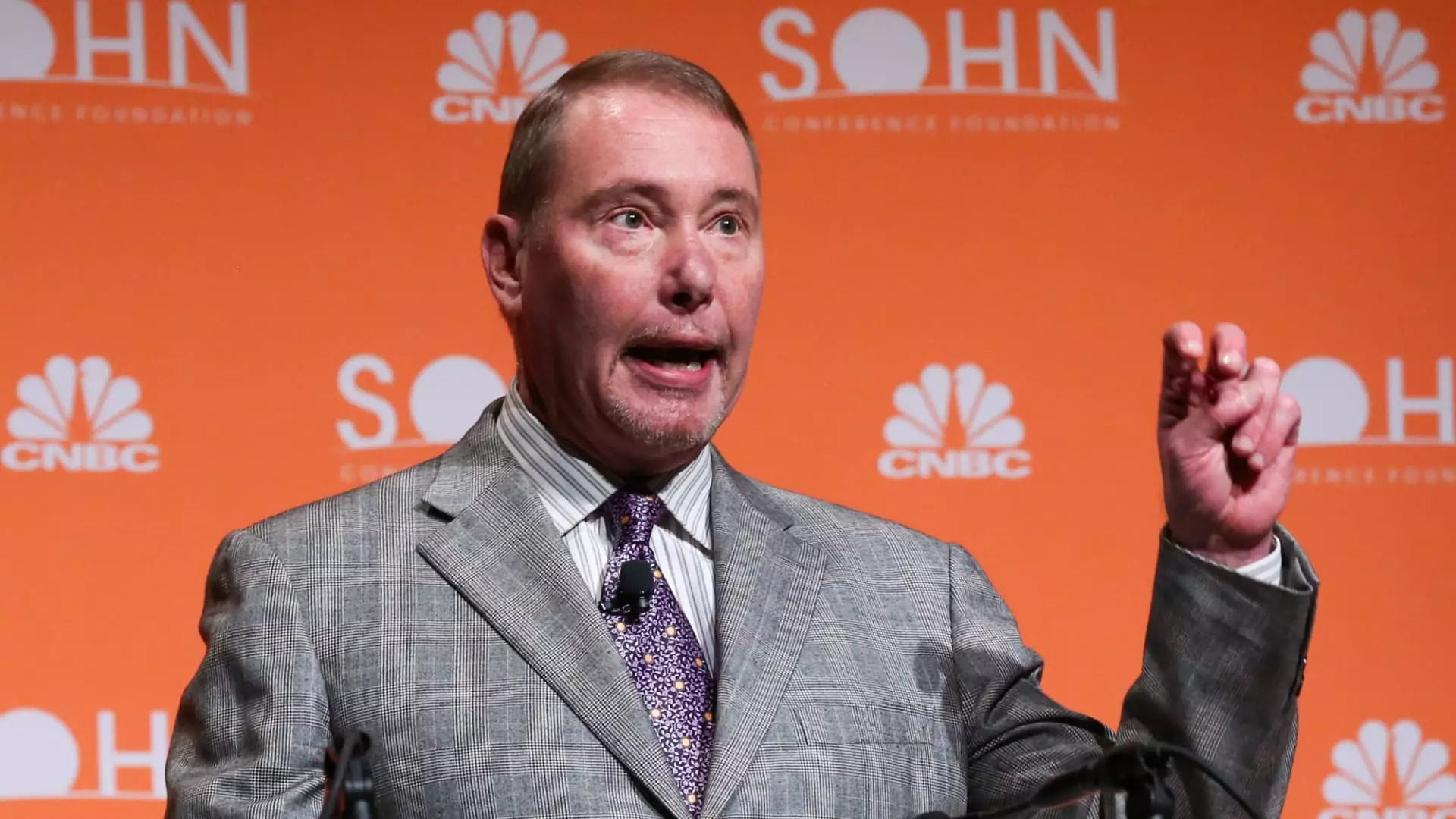In the complex world of finance, clarity can often be elusive. Recently, Jeffrey Gundlach, the CEO of DoubleLine Capital, shared his projections for interest rates in 2025, indicating a cautious approach toward any anticipated cuts. According to Gundlach, the Federal Reserve’s decision-making is heavily influenced by evolving economic data, particularly regarding labor market conditions and inflation rates. His assertion that only one, possibly two, rate cuts may occur in the next year raises significant questions about the Fed’s strategy and economic outlook.
The Federal Reserve, having just concluded a series of three rate cuts by the end of 2024, is currently taking a more measured stance. During a recent interview on CNBC’s “Closing Bell,” Gundlach emphasized that the Fed is unlikely to make drastic shifts in its monetary policy in the near term. He highlighted Fed Chair Jerome Powell’s focus on maintaining stability in the labor market as a crucial factor influencing these decisions. The overarching narrative is clear: any consideration of further rate cuts will be contingent on concrete indicators of economic performance. Gundlach’s belief that no cut will likely occur at the next Federal Reserve meeting underscores this cautious approach.
Gundlach’s perspective on the bond market also warrants attention. He notes an upward trajectory for long-duration Treasury yields, a development that has implications for both borrowers and investors. Since the first rate cut last year, the benchmark 10-year rate has surged, indicating increased borrowing costs and potential investor unease. Gundlach’s assertion that rates have not yet peaked suggests a belief in continued volatility in the fixed income market. This insight is critical for those evaluating investment decisions, as rising rates can lead to decreased bond values, pushing some investors to reconsider their portfolios.
Investor Caution and Market Volatility
Another significant point made by Gundlach relates to the risks associated with high-risk assets in the current market. His advice to exercise caution stems from concerns about valuation levels in various sectors, particularly given the upward pressure on long-term interest rates. As investors navigate this landscape, Gundlach’s insights act as a warning signal, suggesting that those heavily invested in high-risk categories could face headwinds as market conditions evolve.
Jeffrey Gundlach’s observations reveal a landscape marked by uncertainty and cautious optimism. With limited expectations for significant interest rate cuts and the potential for rising Treasury yields, investors are urged to be prudent in their strategies. This thoughtful approach towards economic indicators and asset valuation could serve to safeguard portfolios against the inherent risks posed by a shifting interest rate environment. As we move further into 2025, understanding these dynamics will be essential for both institutional and individual investors alike.

